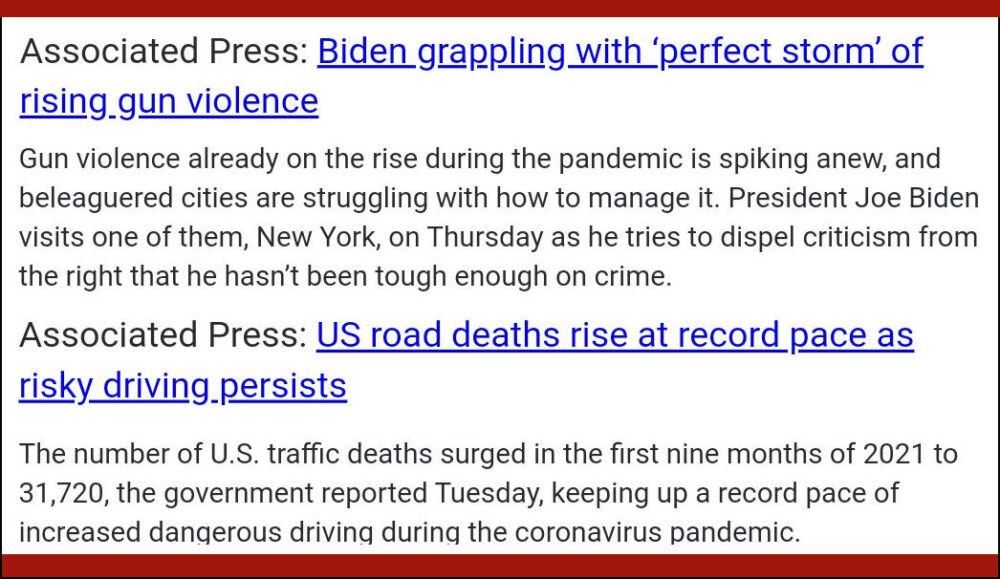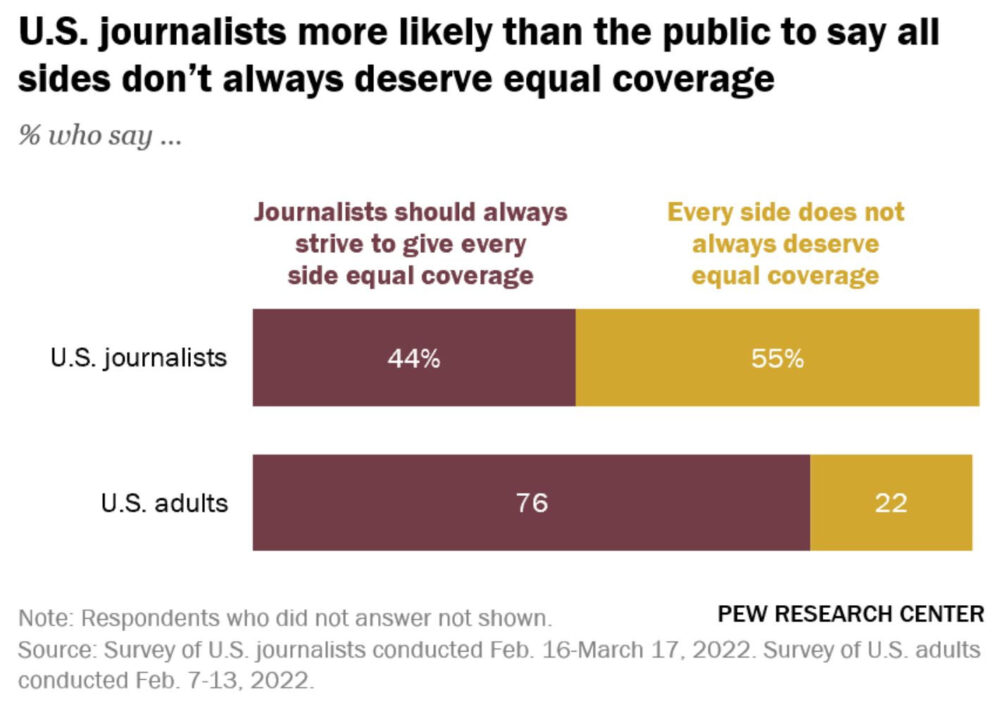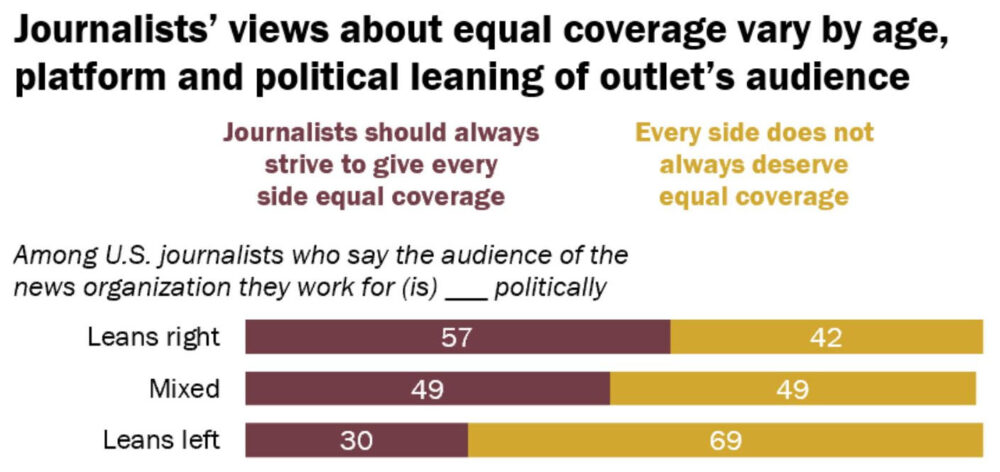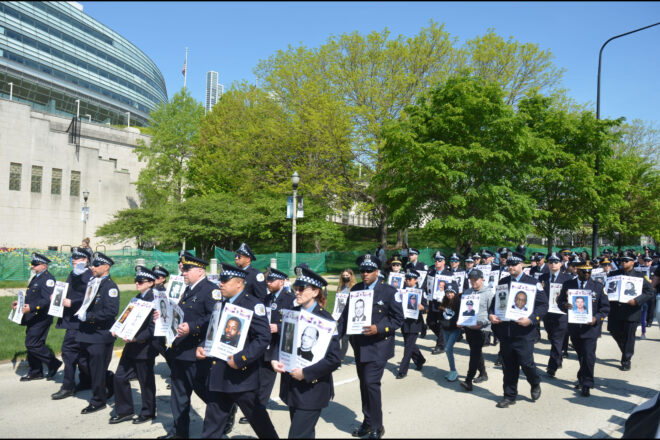The Associated Press (AP) continues to publish stories suggesting a causation link between THE pandemic and crime. No, not investigative journalism seeking to examine whether a virus was created through banned gain of function research. Not journalism suggesting the use of a biological weapon as a war crime. Simply, crime and violence on our streets. AP continues to cite THE pandemic as a key explanation for the continuing lawlessness that exploded in 2020 across America. As we all know, the spark of that explosion occurred in May 2020 in Minneapolis. Yet, let us not forget, that just days before that spark, the news media was citing THE pandemic as the reason why crime in America was declining. It is beyond time to stop using THE pandemic as a bogeyman to gloss over the lawlessness issue that persists in far too much of our nation.
Estimated reading time: 12 minutes
Recent AP Reporting from Minneapolis
On 22 October 2022, AP published their article: “City where George Floyd was killed struggles to recruit cops.” The 947-word story was written by Trisha Ahmed, an AP reporter in Minnesota. Ahmed is part of the “Groundtruth Project” under the Report for America initiative. The core point of the article is that the Minneapolis Police Department (MPD) is understaffed and hiring there is not going well. Both parts of that point are true. Yet, in making that point a key paragraph reads:
“Crime rose in Minneapolis during the pandemic, as in many American cities. Homicide offenses nearly doubled from 2019 to 2021, aggravated assaults jumped by one-third, and car-jackings — which the city only began tracking in fall 2020 — exploded. And the city’s crime problem has been compounded by a mass exodus of officers who cited post-traumatic stress after Floyd was killed, gutting the department of roughly one-third of its personnel.”
The story includes references and several links to articles relating to George Floyd and the prosecutions of the involved police officers. Yet, the article’s only connection to rising crime was THE pandemic. A secondary problem, beyond THE pandemic, was post-traumatic stress among police officers. Apparently, these two health issues alone led to the dramatic one-third drop in MPD staffing. There was no mention of the demonization of that department nor the policing profession overall. Here is a practical reality. In journalism, like policing, if it’s not written down, it did not happen.
THE Pandemic Did It
For those looking for a “crime and pandemic” connection, they need to look no further than the fentanyl crisis. It is a multifaceted issue with huge public health implications. It also has connections to inconvenient political realities of the national security threat posed by China, America’s border problem, Mexican drug cartels, American drug dealers, ineffective public policy responses, an increasingly and intentionally blinded eye to drug crime from much of the criminal justice system, and lots and lots of victims.
As 2020 is the key year of focus for the “THE pandemic” and crime narrative, a data comparison relative to fentanyl is of particular insight. In 2020 and 2021, more Americans between the ages of 18 and 45 years old died from a fentanyl overdose than ANY other cause. That is correct. ANY other cause. Analysis by Families Against Fentanyl found that 175 people of all ages in the U.S. died of a fentanyl overdose each day in 2020. According to the U.S. Centers for Disease Control, overdose deaths in America during 2020 were up 30% from 2019. Last year, overdose deaths were up another 15% from 2020.
For even the casual American news media consumer, the fentanyl crisis has clearly received far less attention than Covid from news outlets like the AP. When we see in the media a reference to “THE pandemic” we know they are not talking about fentanyl, influenza, tuberculosis or any other public health concern. We always know their reference is to THE (Covid) Pandemic, and only THE pandemic is ever connected to lawlessness.
Prior AP Reporting
To be fair, it is not just the AP that continues to carry the message that “THE pandemic did it.” This holds true for a long list of recent public policy disasters. It is particularly true when we consider the damage caused to public safety in America since 2020. As we noted in a February 2022 post, the AP was willing to play the “THE pandemic” card to explain crimes from gun violence to reckless driving.

Covid-19 has many symptoms and has posed many health challenges. Still, it does not take a doctor to be able to discern this truth. The Covid virus did not cause a rise in violence, nor did its symptoms lead to more reckless driving. Yet, THE pandemic can and has served as quite the useful bogeyman relative to public safety.
Beware of the Bogeyman
The term bogeyman is defined as: “an imaginary evil character of supernatural powers, especially a mythical hobgoblin supposed to carry off naughty children.” Parents of old are said to have told tales of the bogeyman to get their children to behave.
In politics, we (the public) are often the “naughty children” to be scared into “behaving.” In 2020, demonization of the police was a popular news approach for many media outlets. Legitimate community desires for both constitutional policing and public safety were hijacked to advance an anti-police political narrative.
A bogeyman approach is always a deception. A magician-like sleight of hand intended to draw attention away from what is actually taking place. When failed policies lead to lives ruined and lost, the options are fess up and fix it, or deny and distract. Deception is the weapon of choice for the latter.
If the political narrative weakens the essential bond between the police and community, should we not expect fewer people to choose to remain in or join the policing profession? Those who recall the advice from Martin Howe in the classic film “High Noon” know that answer. When politics drive the passage of bills that fail to provide true reform, but do diminish the ability of the criminal justice system to address crime and violence, should the community celebrate? Should any of this be expected to enhance public safety? Those are excellent “cops ask questions“ questions.
What the Bogeyman Seeks to Hide
In Illinois, 100 of the state’s 102 elected state’s attorneys (Democrats and Republicans) have sounded the alarm about the SAFE-T Act. These veteran prosecutors are making two points clear about full implementation of this Illinois law. First, public safety is at risk. Second, their ability to hold even violent offenders accountable will be substantially weakened. Lawlessness is a growing problem in far too many American communities, and THE pandemic was not the cause. Bad ideas turned into public policy are facilitating the rising crime and violence which began in 2020.
The name of the Illinois SAFE-T Act is an acronym, which stands for “Safety, Accountability, Fairness and Equity-Today.” The SAFE-T Act was packaged as a criminal justice reform initiative by its sponsors in the Illinois General Assembly. While a clever play on words, the bill was not seriously promoted by its sponsors as a measure that would improve public safety. The intent was to use the political moment to achieve two objectives. Pass measures impacting policing that had wide support, on some points even among the police, while simultaneously forcing other criminal justice changes that separately were not widely popular across Illinois.
Pass in Haste, Repent Over Time:
The act was hastily crafted and has come under widespread criticism for its increasingly negative impact on public safety. Nearly none (or more likely none) of the members of the Illinois General Assembly fully read the 764-page bill before the assembly’s Democratic supermajority voted to pass it. While increasing accountability of the police, it lessens the accountability over even violent offenders. The act restricts the arrest authority of the police. Simultaneously, the act seeks to release nearly all defendants prior to trial and makes it more difficult to issue warrants for defendants who refuse to come to court.
The legislation was approved in the dead of the night on 13 January 2021, during the final minutes of the 101st Session of the Illinois legislature. The actual final bill was not even released to the full legislature until just prior to their voting to pass it. Governor J.B. Pritzker signed the bill into law in February 2021 over the objections of prosecutors and law enforcement professionals across Illinois. Even the Chicago Tribune Editorial Board said the governor should have sent it back for more thoughtful – actual debate.
Yes, the U.S. Constitution demands that the criminal justice system must ensure due process for every defendant. But, equally true is that the constitution seeks a government that promotes the general welfare of the public at large, as well as their safety. When holding offenders accountable is no longer a priority concern for the criminal justice system, should we not expect a rise in lawlessness?
Now THE Response Was a Problem
Intellectual honesty should require that those who go down the “THE pandemic” path to at least insert another word in their causation assumption. Clearly, Covid did not cause an increase in crime and violence. Yet, “THE pandemic RESPONSE” mandated lockdowns, collapsed the economy and damaged communities on many levels. Many lost jobs. Small businesses closed, often never to reopen. Depression and even suicide increased, particularly among young people. Schools were closed, and online learning was no replacement for in-person learning. Many youth were left to the streets. There they were at higher risk for involvement in delinquency and were more easily the victims of crime.
The destabilization brought about by a long list of pandemic RESPONSE mandates was a contributing factor to America’s public safety crisis. Let us not forget the firing of first responders that refused to take experimental and unproven vaccines. This in a time of already lowered police staffing levels. But, here again, it was not THE pandemic that was the contributor to spiking violence and increased crime. The issue was failed policies, which many media outlets, like the AP, advanced without the critical analysis that was once the hallmark of journalism.
Truth and Journalism
Journalism is a profession that has always claimed to be in a search for truth. But, there is a long history of politically-driven journalism. Fairness and liberty were protected by the public’s access to many different news sources among a free press. Truth became knowable through the competition of ideas and the exposure of deceptions.
However, if journalism is disinterested in exposing deceptions, bad policies go unchecked and the public suffers. Additionally, in our modern times, the definition of core terms is often questioned. For many, “truth” is no longer an objective reflection of the “actual state of a matter” or a “conformity with fact or reality.” Truth can just as easily be a subjective understanding expressed as “my truth.” Particularly among younger generations of journalists, there has been a shift toward advocacy and away from objective truth.
Concerning Findings from Pew Research:
In July 2022, Pew Research released a comprehensive analysis of its survey on journalism. They found two points that directly relate in a public safety and the media discussion.
First, compared to journalists, the American public believes far more strongly in the need to tell all sides of a story. 76% of American adults believed in the need for equal coverage. Just 44% of surveyed journalists saw the need for equal coverage of an issue.

Second, the Pew research disclosed a clear distinction between journalists who self-described their audiences by political viewpoint. Journalists who identified their audience as mixed between “leans left” and “leans right” political views were equally divided on the importance of equal coverage (49% to 49%). Interestingly, journalists associated with “right leaning” audiences were far more likely to see the need for equal coverage. 57% of “leans right” journalists believed they “should always strive to give every side equal coverage.” Less than one-third of the journalists from “leans left” audiences were concerned about the need for equal coverage.

A Survey Reminder:
Given the political divide on the issues of public safety and policing in America, readers should be alert to how the approach to journalism can impact the content of such articles. An article addressing rising violence and police understaffing might be consciously absent key context. Perhaps THE pandemic may be a better story match over failed public policies that are more associated with one side of the political aisle as opposed to the other.
Final Points to Ponder
We must dispense with the “THE pandemic” bogeyman. We must also not forget how there has been a sustained and direct assault on the police-community relationship. The media has too often helped to drive a dangerous narrative demanding what I describe as “tragedy-free” policing. Coupled with an “or else,” the view seeks an impossible policing standard. One that holds the police should never take any actions that could cause harm, their actions should never use any force, and the police must act without ever making a mistake.
Our police are drawn from our communities. From all of Western Civilization there has only been one Perfect One. Yes, the policing profession must strive for perfection. As the work is just that important. Yet in the words of Vince Lombardi: “We will chase perfection, and we will chase it relentlessly, knowing all the while we can never attain it. But along the way, we shall catch excellence.”
We say again, the community is right to demand both constitutional policing and public safety. Policing that is always respectful of individual rights. Policing that supports the community’s right to public safety. These things are true. Here is another truth. Our criminal justice system must ensure due process and equality under the law. But, that system must also hold offenders accountable and protect the rights of victims.
We are well served as a nation when there is a properly-focused free press. Journalism must seek to challenge failing public policies. It must do so with the intention of seeking THE truth. It must do so while exposing deceptions and advancing fairness in its own coverage of the news.
We are interested in your thoughts, and invite you to comment below.


